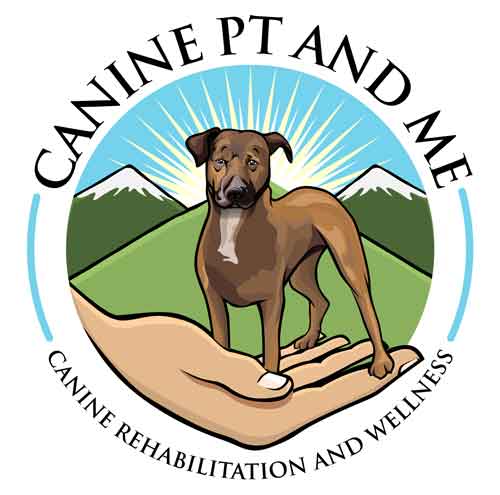Who is a canine physical therapist?
Most people have never heard of, or considered physical therapy for their dog. Some people are skeptical about getting physical therapy for themselves, let alone their four-legged friend. So what is a canine physical therapist? A canine PT is a physical therapist who has gotten their certification to practice on dogs instead of people. They have gotten their physical therapy license and are a doctor of physical therapy. Then, they have gone through extensive coursework and exams to receive their certification to treat dogs.
Why would a PT choose to treat dogs?

You might ask why a physical therapist is not practicing on humans, but is instead treating dogs? The canine world is a highly underserved population and dogs require physical attention, just as people do. Our fluffy friends strain muscles, get tendonitis, break bones, tear ligaments, and require surgeries too. Therefore, after these kinds of injuries occur, your dog is going to need some help rehabilitating. That is where a canine physical therapist comes into play.
The PT world is comprised of many different patient populations and this is an ever-growing population that needs attention. There are specific niches that PTs can specialize in including dogs, but only after they are certified to treat dogs can they start practicing within this niche.
What does a canine PT do?
Physical therapists are experts in analyzing function and movement, and identifying impairments such as joint stiffness, weakness, and range of motion limitations. All of these things lead to changes in the activities that you and your pup like to do together. Oftentimes, the functional limitations are what matter most to the pet and pet parent, not necessarily the medical diagnosis. Your veterinarian’s medical diagnosis is definitely a piece to the puzzle regarding your dog’s overall health and well being. However, a canine physical therapist provides individualized care to each dog that they treat. There is no cookie-cutter approach to canine rehabilitation. Certainly putting every dog in the underwater treadmill and only using laser therapy is not the solution either.
Once a canine PT performs a comprehensive evaluation on a patient, they come up with a list of impairments. Then, in a sequential way they start to address each impairment. If a dog is having joint stiffness and mobility issues, the physical therapist will gently mobilize the stiff joints. If a patient doesn’t have full range of motion, your canine physical therapist may stretch the dog or perform massage techniques. Most importantly, when weakness is present, a canine PT will create a strengthening program to target specific muscles. Each time the dog is seen, their comprehensive program will be modified depending on the status of the dog. Your canine PT will perform a brief assessment at the start of each session to test and observe progress or regression. Then they will adjust the plan of care appropriately for the best results for your furry friend.
Who can benefit from canine PT?

The answer to this question is seemingly simple…every dog can benefit! Whether your dog is a couch potato, or a sporting dog, or just an average house pet, every dog can benefit from canine rehabilitation. The times when people mostly consider canine rehab is once an injury or incident has occurred. However, canine PT can be a proactive option in order to prevent injuries from occurring. Either way whether your dog is limping, or had a surgery, or needs to lose weight, your canine physical therapist is there to help. After all, our primary goal is to get your pup healthy so that you can get back to the activities that you love to do together.
~Canine PT and Me Team
